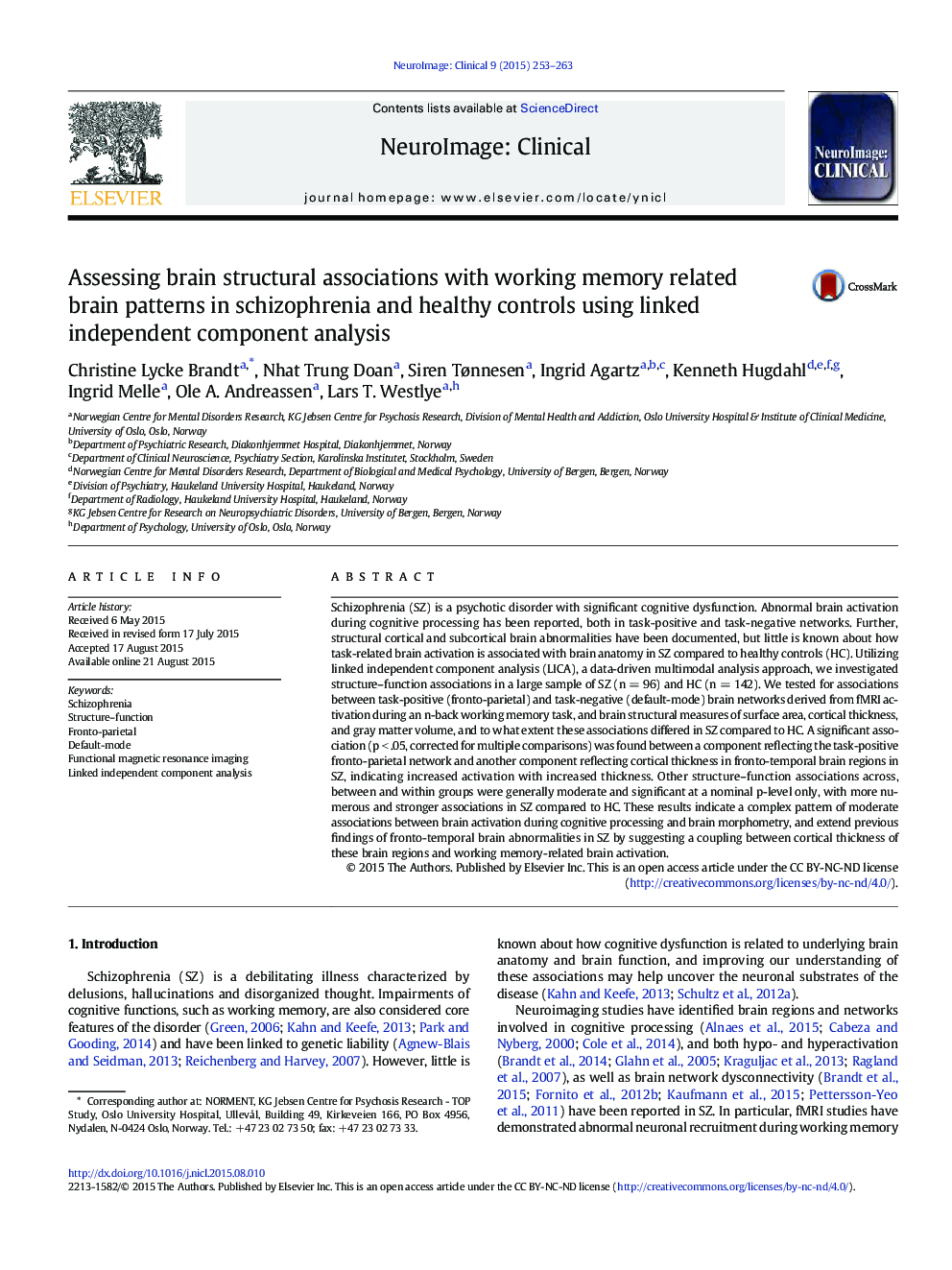| Article ID | Journal | Published Year | Pages | File Type |
|---|---|---|---|---|
| 3075174 | NeuroImage: Clinical | 2015 | 11 Pages |
•Linked ICA was used to investigate structure–function relationships from MRI data.•We tested associations between brain structure and working memory-related networks.•A large sample of schizophrenia patients and healthy controls was included.•Task-positive activation was associated with fronto-temporal thickness in patients.•Other associations were moderate and mostly schizophrenia-related.
Schizophrenia (SZ) is a psychotic disorder with significant cognitive dysfunction. Abnormal brain activation during cognitive processing has been reported, both in task-positive and task-negative networks. Further, structural cortical and subcortical brain abnormalities have been documented, but little is known about how task-related brain activation is associated with brain anatomy in SZ compared to healthy controls (HC). Utilizing linked independent component analysis (LICA), a data-driven multimodal analysis approach, we investigated structure–function associations in a large sample of SZ (n = 96) and HC (n = 142). We tested for associations between task-positive (fronto-parietal) and task-negative (default-mode) brain networks derived from fMRI activation during an n-back working memory task, and brain structural measures of surface area, cortical thickness, and gray matter volume, and to what extent these associations differed in SZ compared to HC. A significant association (p < .05, corrected for multiple comparisons) was found between a component reflecting the task-positive fronto-parietal network and another component reflecting cortical thickness in fronto-temporal brain regions in SZ, indicating increased activation with increased thickness. Other structure–function associations across, between and within groups were generally moderate and significant at a nominal p-level only, with more numerous and stronger associations in SZ compared to HC. These results indicate a complex pattern of moderate associations between brain activation during cognitive processing and brain morphometry, and extend previous findings of fronto-temporal brain abnormalities in SZ by suggesting a coupling between cortical thickness of these brain regions and working memory-related brain activation.
